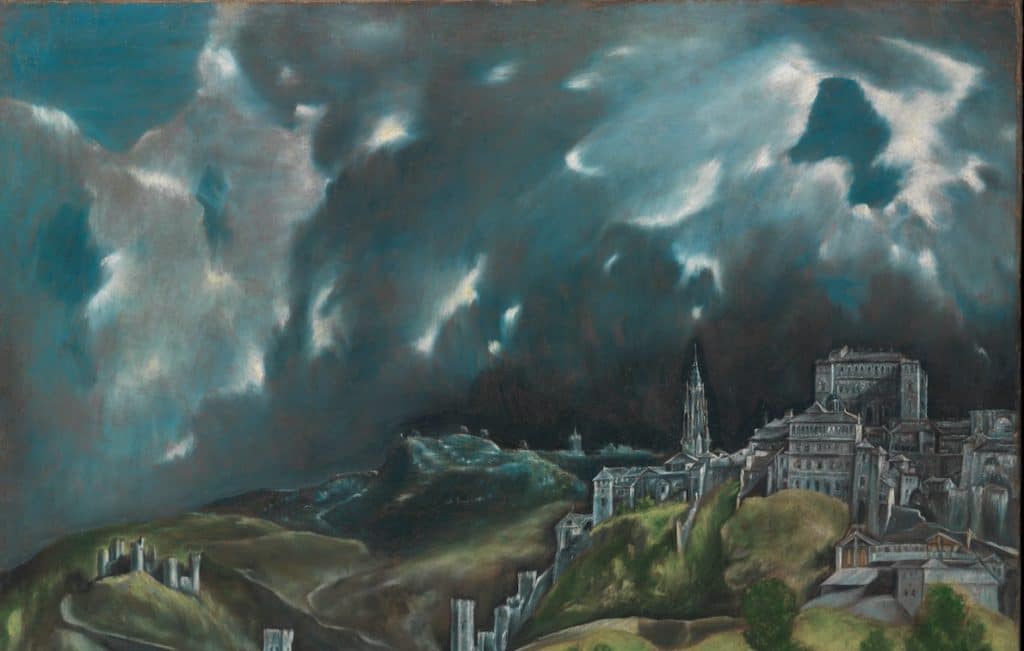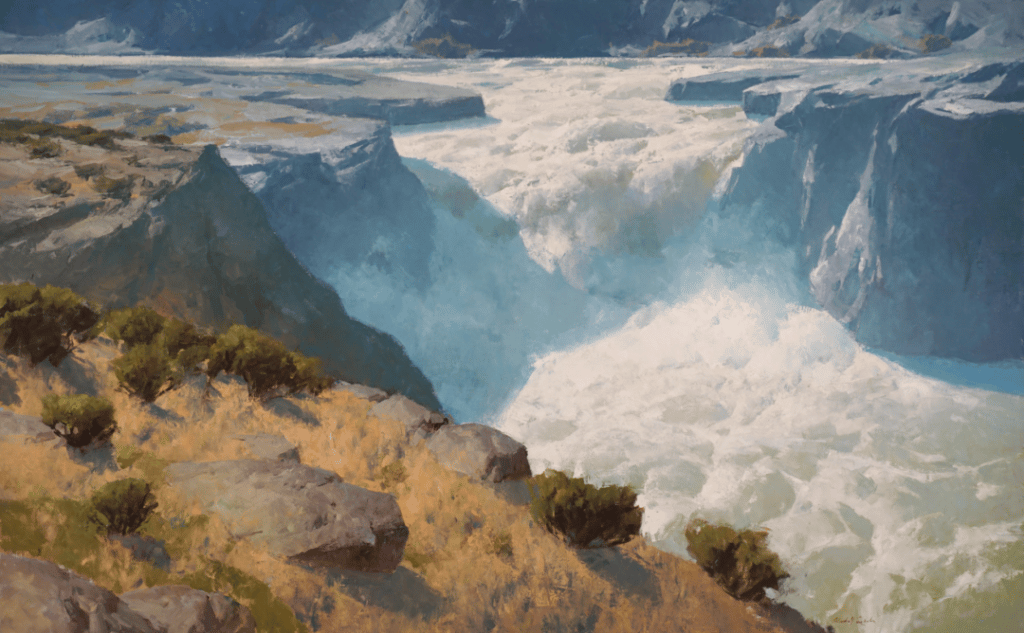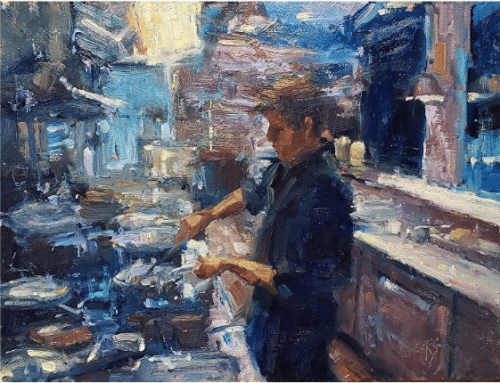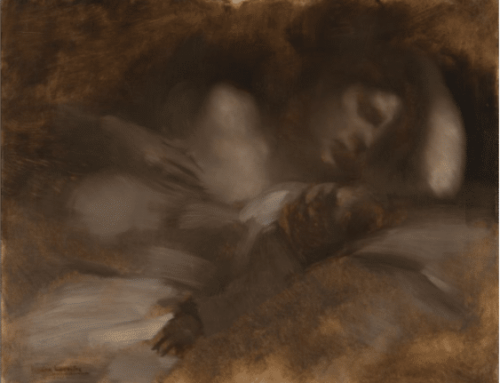You hear a lot about “the sense of place” in landscape paintings, but that’s not what one of the earliest landscapes in the Western canon is about. Quite the contrary: El Greco’s View of Toledo is a spiritual vision that happens to take the form of a landscape.
At first this painting looks like melting wax or something particularly moody by one of the “Golden Age” modern illustrators, like Howard Pyle or Rockwell Kent.It’s an unusual painting, and El Greco (born Domenikos Theotokopouolos in Crete in 1541) was very much ahead of his time.
Although it is a painting of the city in Spain where El Greco (“The Greek”) lived and work for most of his life, all that really matters is what we see on the canvas. And it turns out it’s not even that accurate; it would be better to say it’s based on the city where he lived. The painting is actually an invention in many ways; this particular view of the city does not exist. Although he placed the large church spire in its proper place, he moved around a bunch of the other buildings, clearly demonstrating that documentation was not his primary concern.
Toledo is clearly not what the painting is “about.”
So just what’s going on in this work?
A close look reveals a jostling of rounded shapes and looping lines laced with sharp contrasts of light and shadow flickering across the image. The buildings look frail and unstable, the mounded earth seems unfriendly, alien, liable at any moment to start roiling and churning; trees and vegetation slither among wobbly roads and bridges. It’s as if the landscape itself is alive, writhing beneath the thunderous wrath of God. This rendering of a city is closer to a fearful vision than to reality.
“The effect gives rise to the feeling that the whole landscape is a being moulded by a living energy,” observes art historian Christopher P. Jones, “as if it could split open and erupt at any moment.”

El Greco’s unusual painting style suited Counter Reformation Spain’s (1500s) complex brand of Catholicism, which was mystical, visionary, based on wonder and personal inner experience and devotion. Our eyes are inevitably drawn to the church steeple right of center, below the storm clouds about to crack open, as the way El Greco played it, all the major landscape lines converge there, emphasizing the religious content.
So, rather than the subject of this painting, the city of Toledo becomes the means through which the artist expresses an interior psychological state as well as a view about the nature of man’s relationship with the Divine.
Paintings that capture a sense of place perform a kind of magic created between artist and subject (the locale), a magic that by definition eludes analysis. Ultimately, I think, location matters less than what the artist has put of him or herself into the work: Does it really matter where Turner’s sunsets were? Do we care that most of Inness’s visionary landscapes are “of” New Jersey?
For me, the best landscapes are an expression of some unspoken, three-way relationship between the artist, his or her imagination, and the world.
And in a way, that means between three “unknown variables” – because everyone lives their own equally valid version of perception, imagination, and “world.” That is why truly great paintings raise questions for which there can be no “outside” answer; they’re made of the same unknowable mysteries at the heart of human experience.
“El Greco reminds us that there is an unfriendly world outside of us and that we are all subject to forces beyond our control,” writes art writer Christine Capella. “He leaves it up to us to decide whether we will succumb or prevail.”
Grand Vista Wins Monthly Plein Air Salon

Kimball Geisler, Raging Spring, oil on canvas, 45″ x 72″
“There was never any question that this piece was worthy of the top-most award,” says Lori Putnam of Kimball Geisler’s monumental Raging Spring. Putnam, who judged Plein Air Magazine’s August Salon, won the Grand Prize of the 10th Annual Salon. Here’s her thinking on her top pick:
Plein Air Magazine’s monthly salon is an open competition that culminates in a lavish award gala with cash prizes for the best paintings overall in multiple categories. Visit the Plein Air Salon website for your chance to enter your work, from which the finalists for the grand prizes will be drawn.
In the paint,
Chris




